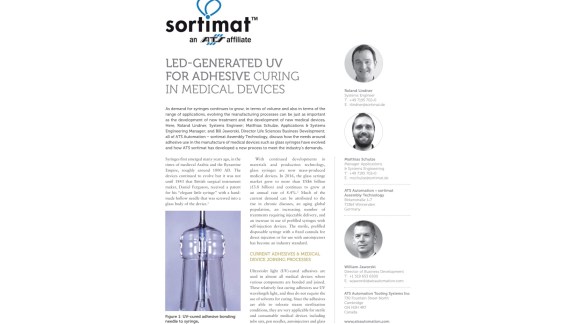
As demand for syringes continues to grow, in terms of volume and also in terms of the range of applications, evolving the manufacturing processes can be just as important as the development of new treatment and the development of new medical devices. Here, Roland Lindner, Systems Engineer; Matthias Schulze, Applications & Systems Engineering Manager; and Bill Jaworski, Director Life Sciences Business Development; all of ATS Automation – sortimat Assembly Technology discuss how the needs around adhesive use in the manufacture of medical devices such as glass syringes have evolved and how ATS sortimat has developed a new process to meet the industry’s demands.
Syringes first emerged many years ago, in the times of medieval Arabia and the Byzantine Empire, roughly around 1000 AD. The devices continued to evolve but it was not until 1843 that British surgical instrument maker, Daniel Ferguson, received a patent for his “elegant little syringe” with a hand-made hollow needle that was screwed into a glass body of the device.
With continued developments in materials and production technology, glass syringes are now mass-produced medical devices. In 2016, the glass syringe market grew to more than US$6 billion (£3.8 billion) and continues to grow at an annual rate of 8.4%. Much of the current demand can be attributed to the rise in chronic diseases, an aging global population, an increasing number of treatments requiring injectable delivery, and an increase in use of prefilled syringes with self-injection devices. The sterile, prefilled disposable syringe with a fixed cannula for direct injection or for use with autoinjectors has become an industry standard.


 Contact Us
Contact Us  Subscribe
Subscribe  LinkedIn
LinkedIn  Youtube
Youtube